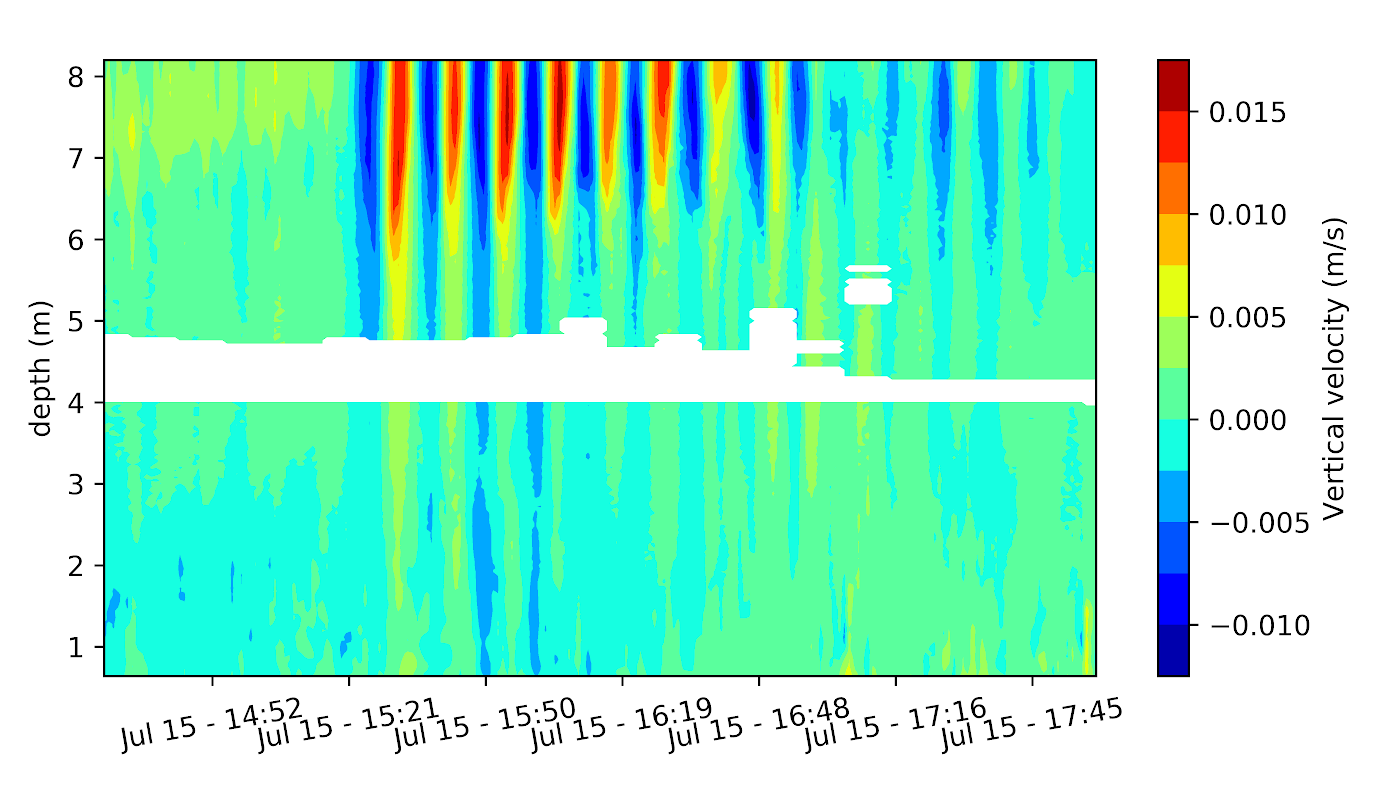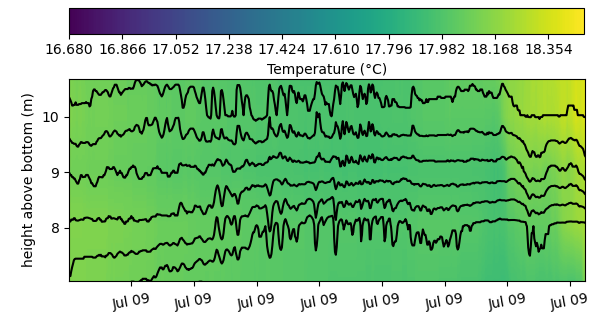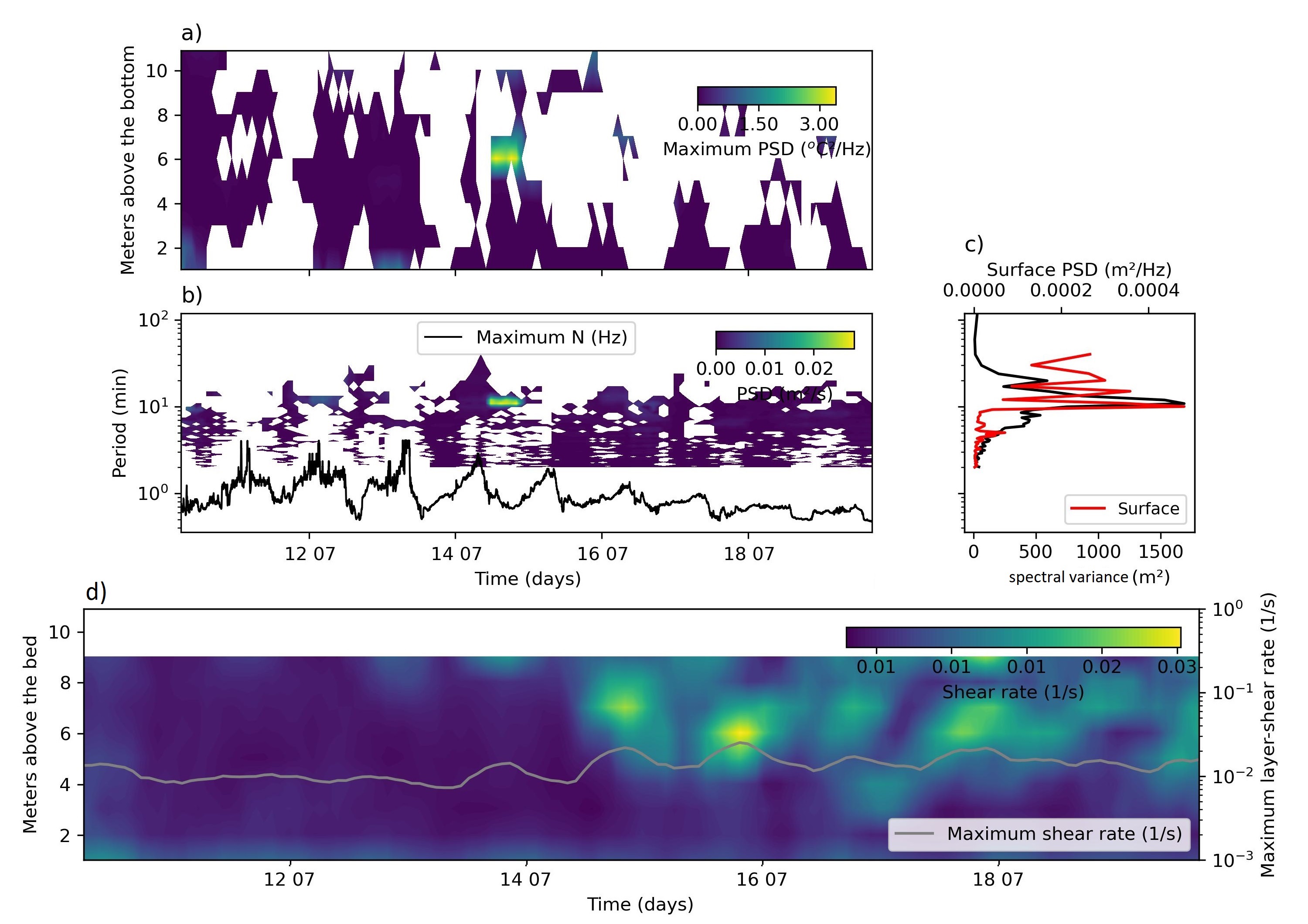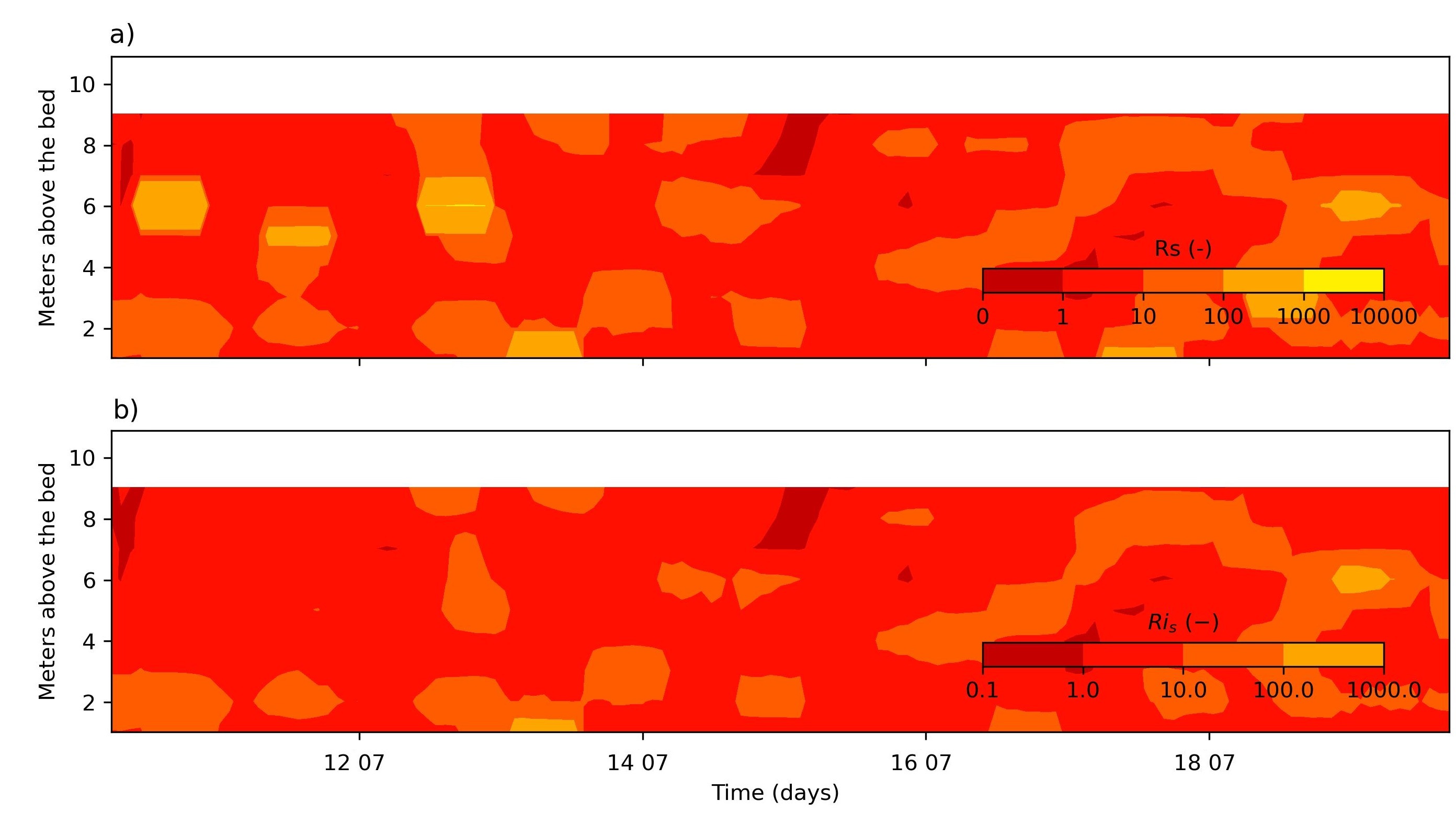High-frequency internal waves

Based on vertical velocities recorded every 1 minute high-frequency internal wave has been observed in the Passaúna reservoir (Fig 1, Ishikawa et al., 2021; Inland Waters). We also detected high-frequency internal waves with higher vertical modes (Fig. 2).
Now we are investigating the source of these high-frequency internal waves (HFIWs) and how they may influence the dissipation of BSIW in the lakeshore. We use meteorological data, underwater temperature, and low-frequency sensors measuring the horizontal velocity in two components (5 minutes) to investigate deeply the dynamic of high-frequency internal waves field. To analyze if large-scale motion is associated with those HFIW, we are also using numerical models to understand the dynamic of large-scale flows in Passauna reservoirs, where we did not identify a dominant internal seiche activity (Ishikawa et al., 2021; Inland Waters and de Carvalho Bueno et al., 2023; Environ. Fluid Mech.).
We observed that the high-frequency internal waves have been generated during periods of high horizontal shear velocity, which can be associated with the wind events that acts at the lake surface, transfering energy from surface layer to the stratified lake interior. However, more investigation needs to be conducted to highlight if those high-frequncy internal wave are generated by large-scale flow.
Some observations have suggested that the interfacial shear between layers just provides an increase of HFIW energy, but even in the absence of interfacial shear, we may observe low-amplitude HFIWs.
In addition, the occurance of high-frequency internal wave of higher vertical mode can be associated to background shear currents (Zhang et al., 2018; Nonlin. Processes Geophys.), which can suggest that same mechanism could favor the formation of high-frequency internal wave in Passaúna reservoir.

HFIW induced by shear?

Despite our efforts, the source of the high-frequency internal waves (HFIWs) observed in the Passaúna reservoir remains elusive. Our initial assumption that these waves are generated by shear stress between layers, indicated by the Richardson number, was not supported by our findings. The lack of a strong correlation between shear stress and the occurrence of HFIWs suggests that other mechanisms may be at play.
While we were able to identify HFIWs in the present data, unraveling the exact processes behind their generation requires further investigation. It is evident that factors beyond shear stress contribute to the formation of these waves within the reservoir. Other potential drivers, such as thermal gradients, internal stratification, or localized disturbances, may be playing significant roles.
It is important to note that while we have not yet pinpointed the precise source of these high-frequency internal waves, their existence within the reservoir is undeniable. As we conduct further research and collect additional data, we hope to shed more light on the mechanisms driving the generation of HFIWs, ultimately enhancing our understanding of the complex dynamics within the Passaúna reservoir.
